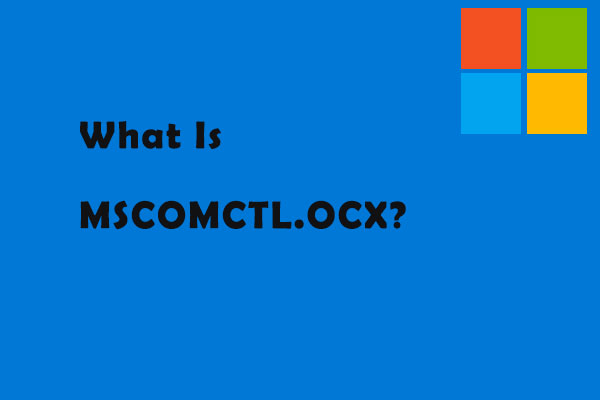
Mainstream Support for Microsoft Visual Basic 6.0 ended on March 31, 2005. Customers who are not licensees of Microsoft Visual Basic 6.0 nor Microsoft Visual Studio 6.0 but are using older versions of the two Common Controls.Customers who are Microsoft Visual Basic 6.0 and/or Microsoft Visual Studio 6.0 licensees.This package is provided under the terms of the End User License Agreement and is intended for the following customers: This package will not install these Common Controls if they do not already exist on the target system. This is typically constructed on the fly, and is rebuilt when needed.This package updates two Microsoft Visual Basic 6.0 Common Controls: mscomctl.ocx and comctl32.ocx to address the issues described in the KB articles noted in the Related Resources section on this page. For example, A.EXE may depend on B.DLL, but B.DLL may also depend upon C.DLL. These files, which tend to have a Visual Basic "Setup application" heritage, typically contain information about the dependencies a given EXE or DLL has on other DLL's. These names were given as containers for VB extensions under the old "* O*LE * C*ontrol E* x*tension" moniker, hence OCX. OCX - In reality, it's just a COM DLL with a different extension. The absence of the vital COM registration information is the reason copying OCX files to the host folder is not sufficient for the consuming application to leverage the COM objects hosted therein.Īdditional information re file extensions

If this is not done, no COM registration is available, and calls for the objects hosted in the OCX/DLL will fail. The ProgID's, ClsID's, and related type library informatoin are "published" to Windows via the RegSvr32 utility, which really just loads the target DLL/OCX and specifically calls the COM DLL entry point "DllRegisterServer," which allows the DLL to publish its COM registration information. If the OCX isn't registered, there's no COM information to allow Windows to perform the required mapping. This is because applications will create instances of COM objects via their registered programmatic ID ("ProgID"), that Windows will, in turn, translate to the CLSID and COM in-process server DLL that provides the implementation for the object(s). This is accomplished via the command-line "regsvr32" utility.Ĭopying these files to the application's host directory will not be adequate to allow the application relying on the components provided in the. Files ending with an ".OCX" extension are actually 32-bit in-process COM DLL's that must be registered in order for them to be used.


 0 kommentar(er)
0 kommentar(er)
